
John Pawsey at Shimpling Park Farm
Wildflowers at Shimpling Park Farm

John Pawsey at Shimpling Park Farm
Whatever your views on land ownership are, as it stands if we want to make positive steps towards nature recovery, engagement with farmers managing around seventy percent of our English countryside will be key in delivering those outcomes.
From my early farming days in the mid 1980s I was acutely aware of the distance between the camps of food production and nature within farming organisations when I represented a wildlife friendly vision of agriculture. Engagement with farmers by organisations like the Suffolk Wildlife Trust thirty five years ago was pretty tricky, and coupled with limited government funds for environmental schemes, it possibly explains why we have seen farmland species in decline over that time period. We just weren’t talking. But farming’s ability to positively transform wildlife in our countryside is as possible as it was to denude it in a post war drive for food production.
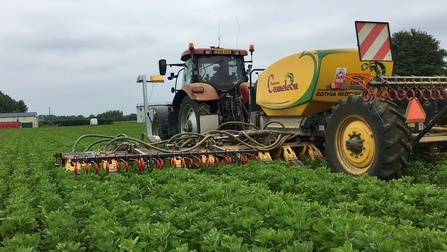
Tending food crops on Shimpling Park Farm
Government funds for environmental delivery have increased in recent years, but payments for sowing wildlife mixtures have paid farmers for income forgone and so planting a crop delivers the same income as planting mixtures for farmland birds or pollinators. That neutral financial incentive has meant that the schemes have only engaged farmers like me who want to do it anyway, resulting in patchy uptake and disconnected pockets of good environmental management. Not great for wildlife.
But all that’s about to change.
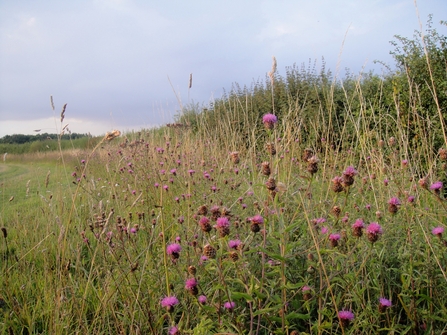
Field margin on Shimpling Park Farm
The new Environmental Land Management scheme which will fully open in 2024 potentially has much deeper pockets. It will hopefully not only pay farmers income forgone, but an additional amount to manage those places for wildlife, and to place wild bird seed mixtures, wildflower meadows and other options on a similar financial footing to any other farming business decision. A massive uptake of this scheme is what we need and that will only be achieved if a fair wage is paid to land managers for that delivery.
Even though we have been in various wildlife schemes since 1998, converted our farm to organic production in 1999 and seen a reversal in some species decline, I am incredibly excited about the prospect of our farm doing even better under this new scheme and am looking forward to seeing our landscape visually and audibly change.
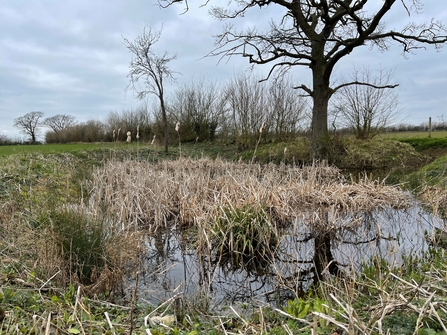
Pond on Shimpling Park Farm
Alice and I spent two nights at Knepp Castle two years ago where they have transformed a large farming estate into a re-wilded haven for wildlife. Even though I don’t have plans to re-wild the whole of Shimpling Park Farm, I was completely inspired by a map that Charlie Burrell, owner of the Knepp estate, put up to show how hints of re-wilding on all our farms could connect the fully re-wilded areas providing substantial wildlife corridors that we have been talking about for years but never delivered.
We have gathered enough data over the last ten years to know where the productive areas of our farm are in terms of profitable food production, and I envisage that we will still produce food there, but it’s the less productive areas; by woodland edges, next to hedges, on poorer soils, in awkward corners that conveniently by their physical nature are better for wildlife than for cropping anyway. It’s only the skewed subsidy system that has kept those areas cropped to date.
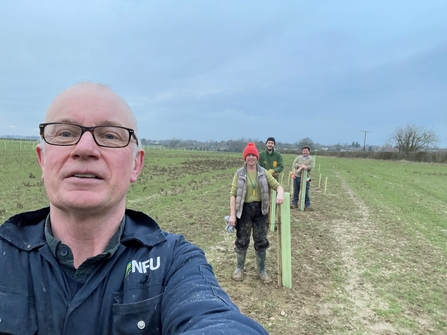
Agroforesty at Shimpling - John Pawsey and his team in action
Because I have been looking at my farm daily since 1985 when I started work here, I have grown used to its visual appearance and accepted the view as how it should be. Hardly visionary, blind acceptance possibly. Sure, I’ve planted several miles of hedges, a few small woods, left areas to grow scruffy but essentially I have been tinkering around the edges of changing its appearance in the hope of increasing biodiversity, informed by a succession of prescriptive environmental schemes.
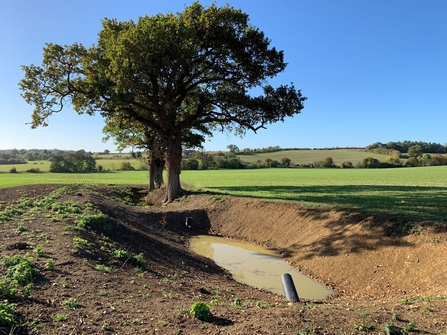
Restoring a ghost pond on Shimpling Park Farm
So what is my vision for my own farm and where do I think the ambition of a successful new land management scheme should lie?
Personally, I want my hedges to be bigger and wider, creeping out into those uneconomic areas and act as living tentacles, linking habitats across the farm. I want to recreate the meandering brook that was straightened to the southern part of our land and create a wetland. I want to reclaim all the ponds that have been filled in over the last 200 years. I want the dawn chorus to be deafening. I want to be scraping the fuzz of insects off my glasses as I cycle to the post box and to be caught in rising butterflies and moths as I walk across the meadows on my way to work. I want my farm to be an explosion of life while at the same time produce nutrient dense food and rear animals to the highest welfare standards.
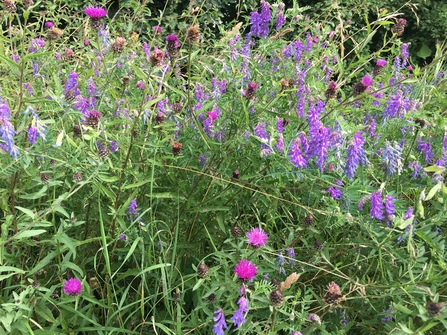
Wildflowers on Shimpling Park Farm
While that is my ambition, greater delivery will be if we can effect a larger area than just individual farms. That is why, in partnership with the Suffolk Wildlife Trust, we are putting together a cluster of proximate farmers to develop a similar vision, although tailored to individual and topographical needs.
So, where are our camps in terms of food production and nature today? Well, I think that we are in the same field at the moment, but if we want real success from the new Environmental Land Management schemes, we need to be sharing tents. Toasted marshmallow anyone?